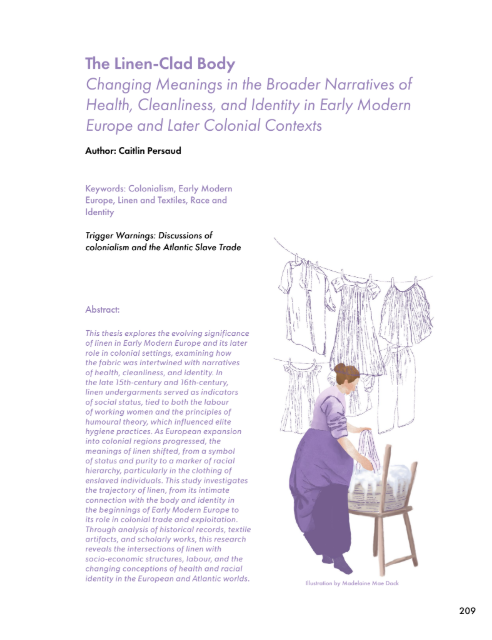The Linen-Clad Body
Changing Meanings in Narratives of Health, Cleanliness, and Identity in Early Modern Europe and Later Colonial Contexts
DOI:
https://doi.org/10.29173/crossings291Keywords:
Colonialism, Early Modern Europe, Linen and Textiles, Race and IdentityAbstract
This thesis explores the evolving significance of linen in Early Modern Europe and its later role in colonial settings, examining how the fabric was intertwined with narratives of health, cleanliness, and identity. In the late 15th-century and 16th-century, linen undergarments served as indicators of social status, tied to both the labour of working women and the principles of humoural theory, which influenced elite hygiene practices. As European expansion into colonial regions progressed, the meanings of linen shifted, from a symbol of status and purity to a marker of racial hierarchy, particularly in the clothing of enslaved individuals. This study investigates the trajectory of linen, from its intimate connection with the body and identity in the beginnings of Early Modern Europe to its role in colonial trade and exploitation. Through analysis of historical records, textile artifacts, and scholarly works, this research reveals the intersections of linen with socio-economic structures, labour, and the changing conceptions of health and racial identity in the European and Atlantic worlds.

Downloads
Published
Issue
Section
License
Copyright (c) 2025 Caitlin Persaud

This work is licensed under a Creative Commons Attribution 4.0 International License.

